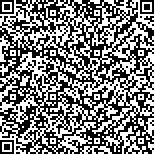| 本文已被:浏览 3726次 下载 2225次 |

码上扫一扫! |
|
|
| 采用OIE标准检测养殖对虾中传染性皮下及造血组织坏死病毒(IHHNV)的PCR检出类型 |
|
袁颜颜1,2, 杨 冰1,2, 万晓媛3, 刘 笋3, 刘天齐3, 黄 倢3
|
|
1. 农业部海洋渔业可持续发展重点实验室 中国水产科学研究院黄海水产研究所 青岛 266071;2. 上海海洋大学 上海 201306;3.农业部海洋渔业可持续发展重点实验室 中国水产科学研究院黄海水产研究所 青岛 266071
|
|
| 摘要: |
| 利用世界动物卫生组织(OIE)推荐的4对引物(389F/R、392F/R、77012F/77353R和309F/R),通过普通PCR方法,对本实验室2011−2012年采集于国内不同地区的对虾样品进行IHHNV(Infectious hypodermal and hematopoietic necrosis virus)检测,并对国内存在的IHHNV检出类型进行初步分析。检测结果显示,在凡纳滨对虾、斑节对虾、中国对虾、宽沟对虾中均检测出了IHHNV,而在脊尾白对虾中未检出。其中凡纳滨对虾阳性率最高,中国对虾阳性检测率最低。对虾样品2011年阳性率高于2012年,华东地区高于华北、华南两地。此外,根据4对引物的检测结果,得到国内IHHNV的4种PCR检出类型。 |
| 关键词: 传染性皮下及造血组织坏死病毒(IHHNV) PCR OIE标准 对虾 |
| DOI:10.11758/yykxjz.20150110 |
| 分类号: |
| 基金项目:国家自然科学基金(31101935)、中央级公益性科研业务费专项资金(20603022011009)、国家虾产业技术体系建设任务(CARS-47)和“泰山学者”建设工程专项经费共同资助 |
|
| PCR Detecting Types by the OIE Standards for Infectious Hypodermal and Hematopoietic Necrosis Virus (IHHNV) in Farmed Shrimp |
|
|
| Abstract: |
| Infectious hypodermal and hematopoietic necrosis virus (IHHNV) is a kind of common virus in shrimp culture industry in China, influencing prawn breeding all over the world. IHHNV is harmful to Litopenaeus stylirostris and the mortality can be as high as 90%. For Litopenaeus vannamei, the mortality is not high, but can suffer from runt deformity syndrome (RDS). IHHNV infection in Penaeus monodon is usually subclinical, but RDS, reduced growth rates and reduced culture performance have been reported in IHHNV-infected stocks. OIE recommended 5 sets of primer pairs to detect different genotypes of IHHNV. In order to know the detecting types in China, we used four sets of primer pairs in the PCR protocols recommended by the OIE standards to detect penaeid shrimp samples collected in 2011 and 2012 from different provinces. These four sets of primer pairs are 389F/389R, 392F/392R, 77012F/77353R, 309F/309R, respectively. The detection results showed that IHHNV positives were detected in the samples of L. vannamei, P. monodon, Fenneropenaeus chinensis and Melicertus latisulcatus, but not in the sample of Palaemon carincauda. The positive percentage of L. vannamei was the highest, 70.8% (389F/R) in 2011 and 34.3% (389F/R) in 2012, and that of F. chinensis was the lowest, which is 8.3%. The more positive of penaeid shrimp samples in 2011 were detected than that in 2012. The positive percentage of IHHNV in penaeid shrimp samples from East China is higher than that from North China and South China. We got four detecting types from the PCR detection with 4 sets of primer pairs recommended by the OIE standards. For detected typeⅠ, the positive rate is 90% for all the four primer sets. For detected typeⅡ, the positive rate is 4% for primer set 389F/R. For detected type Ⅲ, the positive rate is 4% for primer sets of 389F/389R, 392F/392R and 309F/309R. For detected type Ⅳ, the positive rate is 2% for primer sets of 389F/389R and 309F/309R. The survey provided valuable information for the future study and surveillance on epidemiology of IHHNV. |
| Key words: Infectious hypodermal and hematopoietic necrosis virus (IHHNV) Polymerase chain reaction (PCR) OIE standards Penaeid shrimp |